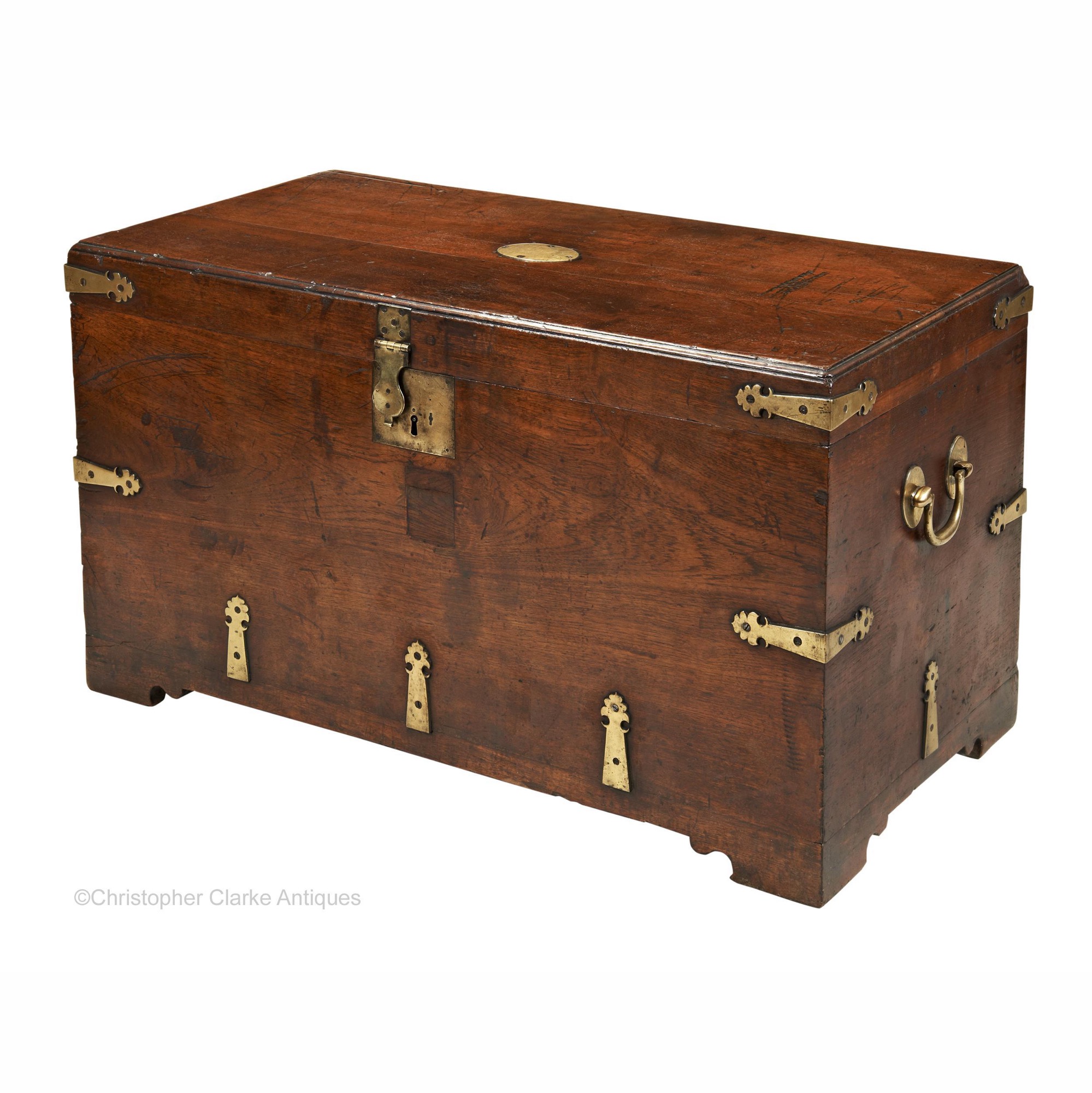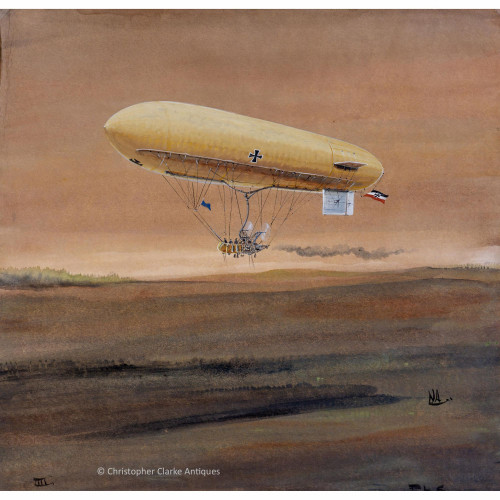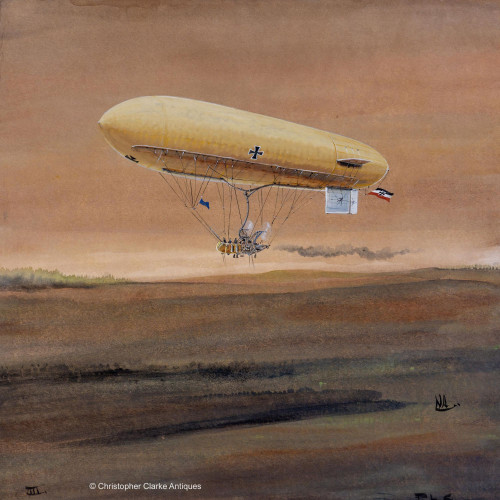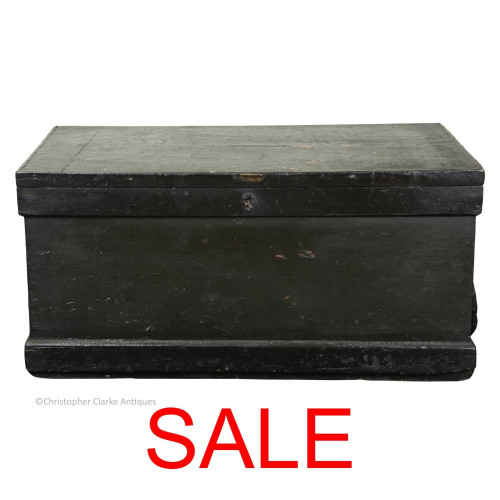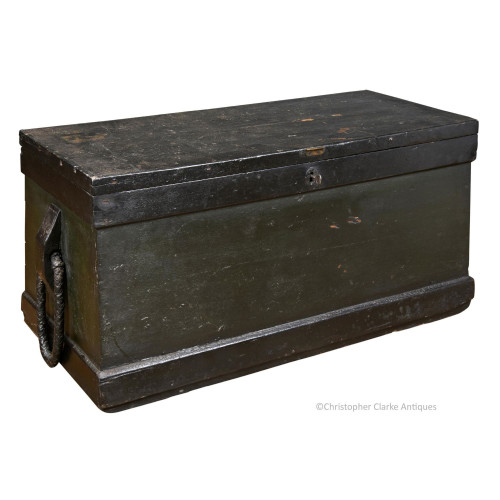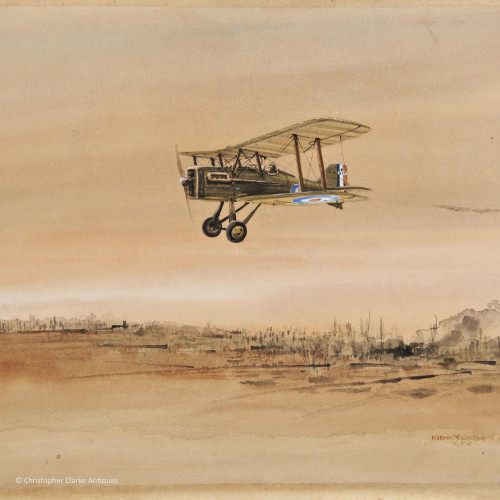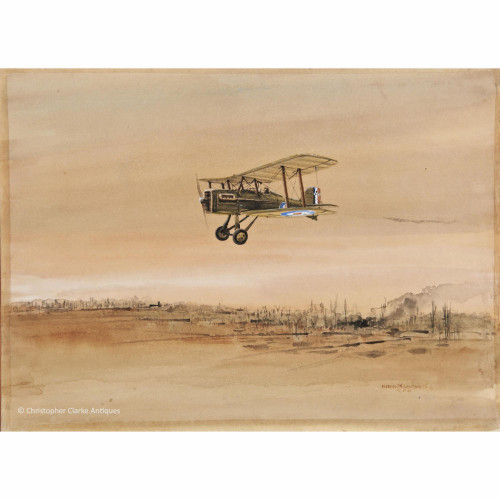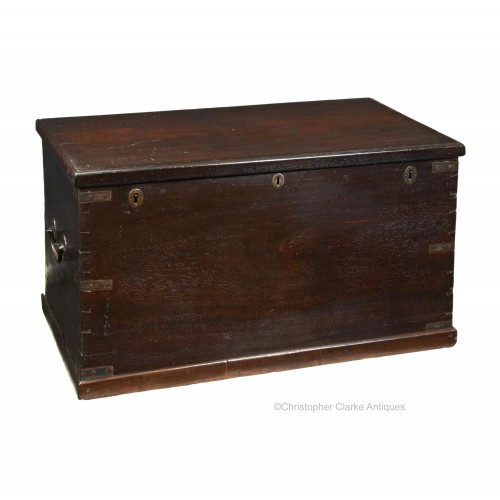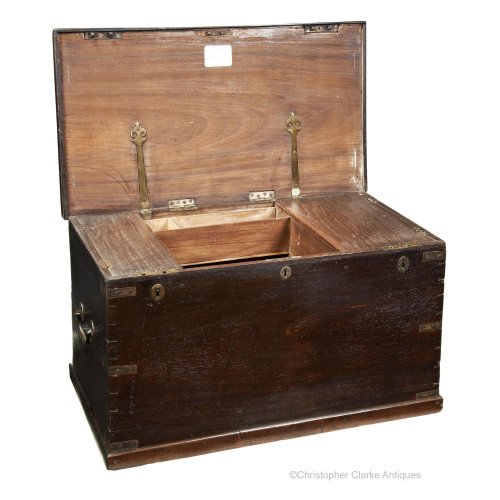Lt Col Cadwell Trunk
Lt Col Cadwell Trunk
82823
An Anglo-Indian teak trunk with provenance to Lt. Colonel Alexander Caldwell who commanded the artillery for Wellington at Seringapatam in the defeat of Tippoo Sultan.
The trunk is well made with its earlier age showing its quality. The top has a moulded edge and the bracket feet are nicely shaped. The thick, raised brass strap work to the edges are shaped decoratively to the ends. The attention to detail is such that they extend through the plinth base to support the base boards of the trunk. The parts of the straps are normally unseen and have taken on a verdigris colour. The brass carrying handles to the sides are a good size and chunky. The main body of the trunk has a raised lip to its interior edge to fit the rebated edge to the lid. The top of the trunk can be fully opened to sit horizontally, held in place by long brass hinges. The trunk has a brass hasp lock that fits to a square escutcheon plate. There is a patch below this and marks above that suggest at some point there was an additional lock fitting. The top of the trunk has an oval plate which is engraved Lt. Col. Alex.r Caldwell Artillery No. 2.
The owner of this trunk had a rich military history and was heavily involved in many of the battles that cemented British rule in India. Items belonging to soldiers that fought at Seringapatam do not come on the market often. Aside from the trunk's exciting provenance it is also a very practical piece of furniture not only offering good storage space but being a very commercial size. Circa 1815.
Lieutenant Colonel Cadwell
Alexander Caldwell had a very distinguished career as a soldier in India helping the British to take control of the country and push the French out. He is not to be confused with his nephew James Caldwell who was also at Seringapatam and was a contemporary of Lachlan Macquarie, the famed Governor of New South Wales. Alexander was appointed a cadet of the Honourable East India Company's Bengal Presidency in 1782 at the age of 19. His first year was spent at Woolwich training for the artillery before he departed for Calcutta where he was appointed Lieutenant Fire-worker and was garrisoned until he was sent to Dacca in 1787. He rose steadily through the ranks, sometime gaining his promotions whilst back in England on sick leave.
In 1793 he volunteered to accompany the artillery to the Coromandel coast with the army led by Lord Cornwallis. In 1796, after promotion to Captain in the January, he fought with his company at Hyderabad against a French force in the Nizam's territory. In 1798 he joined General Harris' army for the war against Tippoo Sultan of Mysore. This included the battle of Malavilly in March 1799 and the Tope near Seringapatam where he received Arthur Wellesley's thanks for his command of the artillery. He helped spike the guns on the glacis of Seringapatam with Colonel Campbell of the 74th and then served in the batteries for the whole of the siege on the Tiger of Mysore's stronghold. He was also involved in the assault of the fort and was present at the surrender. After Seringapatam he was put in command of the artillery attached to Colonel Bowser's force that was tasked with taking the forts of Gurumcondah, Hurrial and Gooty. Aside from commanding the artillery he also acted as field engineer and led the storming party that took Gooty's inner fort. His courage and ability didn't go unnoticed and he was mentioned in general orders and awarded a medal for Seringapatam. He then joined Colonel Desse, again in charge of the artillery and as an engineer, in the taking of Cuptal, where he received a shoulder wound.
After Mysore, Caldwell returned to Bengal in 1800. Five years later he was appointed Aide-de-Camp to Colonel Green at Fort William. Caldwell was promoted Major in 1807 whilst back in England. In 1811, the Commander-in-Chief of India, Lt. General Sir George Hewitt selected him to command the artillery accompanying Lt. General Sir Samuel Auchumty's expedition to Java. He acted with distinction and again received a medal and letters of thanks for his conduct. He was promoted to Lieutenant Colonel on 1 March 1812, which is the rank engraved to the trunk. In July of that year he commanded the artillery against Zeman Shah at Agra. In 1815, he returned once again to England on sick leave. Two years later he was awarded the order of Companion of the Bath by the Prince Regent. In 1819 Caldwell returned to India but retired from active service in 1821. He became a full Colonel in 1829 and a Major General in 1837. In the same year, William IV made him a Knight of the Bath. On the recommendation of the directors of the HEIC, Alexander Caldwell was one of three officers to be awarded Grand Crosses of the Order of the Bath in celebration of Victoria's coronation in 1838. Alexander Caldwell spent his final days at his house in Upper Berkeley Street, London dying on the 6th of December 1839.
Dimensions:
Early 19th Century
Circa 1815
Brass bound teak
India
Lt. Col. Cadwell
Antique campaign trunk
Alexander Cadwell
Good. Old patch by lock hasp.
RELATED ITEMS

